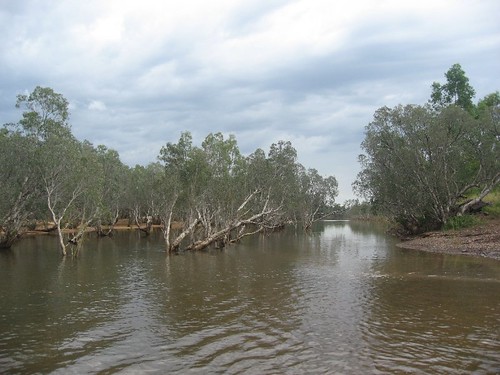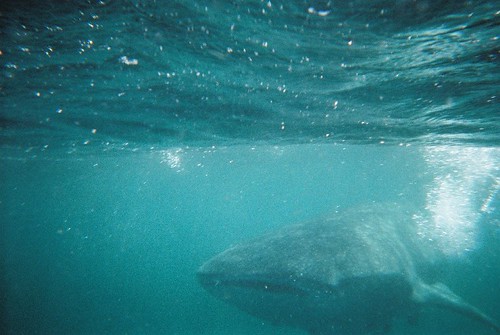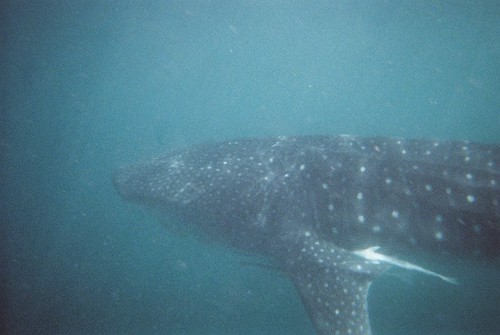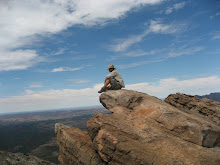It is a 600km stretch of highway from Derby to Kunnunura that shoots directly across the northwest corner of Australia. If you're going from Broome to Darwin, this is one of two routes available. Road conditions vary heavily over the course of a season. The road is currently only open to 4-wheel drive vehicles below 7 tonnes, because there is still quite a bit of water on the roads. It has been an interesting trip. My first night, I ran into a pair of dutch guys that I met in Exmouth. We had a couple of good laughs, due in part to the fact that I had forced them to take some mp3 audiobooks to help pass the driving time - including Men are from Mars and Women are from Venus.
Though the vast majority of the drive was remarkably uneventful, there are a couple of very noteable exceptions.
At the midpoint on the second day I hit a bump so big that it broke the mounts for my roof rack, sheering its feeble steel legs. The cage above, complete with full gas cans and huge spare jug of water came crashing down on the roof, giving the truck a somewhat appropriate set of battlescars to remember the trip.
The morning of the third day I came to a river. Up to this point, there had been a number of water crossings over small streams, creeks and floodways. The operating manual for the Pajero says she can safely cross something up to 60cm deep, so to this point the water crossings were more of a novelty than a concern. Until I came to the Durack river. It was there that I met a German fellow standing next to river driving a little all-wheel drive car... swearing in German. We inspected the river several times. I walked through the 20meter track I would drive and carefully measured the depth of the water. 58cm. Half of my engine would be submerged, along with the exhaust. After about a half hour of deliberation I decided to throw caution to the wind and give it a go. Worst case scenario, we could just push it through if I got stuck.
And I made it. The truck made a little wave when it hit the water, and I ambled along slowly in its wake trying to match the same speed. The German fellow held his breath the entire time. Once I'd crossed we tried to sort out ways to get his car across. He ended up turning around, guessing that the water would engulf the computer in his car, effectively parking it for good. Probably a wise choice...

But the real drama came when I came to the second river crossing. The Pentecost river is right at the end of the Gibb road. About 100 meters across, it looks daunting from the start. It doesn't help that there are "beware of crocodile" signs posted everywhere to keep you from testing the water. Previous reports I had seen had listed the depth of the river at 50cm, though it was tough to tell given the width. A very helpful Australian couple who had just crossed in the other direction decided to stick around with me in case I didn't make it.
If I decided I didn't want to cross it, I would have no choice but to return 500km in the direction I came and then go an additional 1000 km detour around the whole region.
I decided to risk it. The parting words of the helpful Australians as I left the west bank of the river were "If you get bogged, don't get out of your truck. There are crocodiles in the river. We'll go for help." Not exactly reassuring, considering the last sheep/cattle station was at least an hour back.
At the first quarter marker, the water was already well over the height of the hood of the truck. Instead of the rumored 50cm deep, this was more like 90cm in depth. I winced as I continued onwards in terror, dreading the possibility of an engine stutter. If the engine stalled I would be screwd. Trudging through the mucky water, jerking wildly as I bounced over the unseen rocks below, I could see water start to pour in around my feet from under the doors. Please keep going, please keep going. By the halfway point the hood was back above water, and truck was still plugging away. When I finally creeped out onto the east bank of the river, I parked for a minute to let the water drain from the truck and some of the adrenaline work its way through my system. I shouted a thank you across the river to my would be rescue team, and continued onwards. So far the truck seems to be running perfectly (or at least as well as it was running before) save for one curious issue... Instead of burning oil, the running engine smells like sugar cookies.

This is easily the most reckless and irresponsible choice I have ever made.
And oddly one of my proudest moments. What a blast!



























